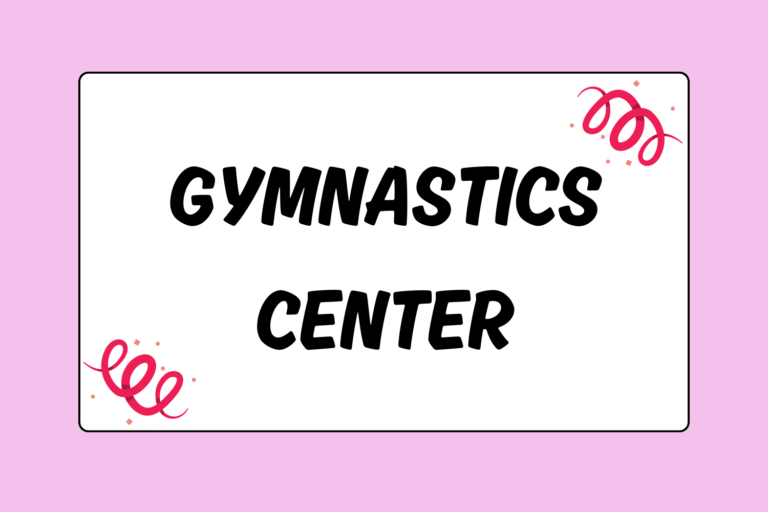The uneven parallel bars is an event only performed by women in artistic gymnastics. The apparatus includes two bars set apart at different heights and gymnasts perform multiple flips, twists and release moves to transition from one bar to the next.
For many, the uneven bars (bars for short) are one of the hardest events to learn and master. They require strength, balance, coordination, courage and timing—skills tested one by one in the specific required elements. But regardless of its challenges, the bars are a favorite event among gymnasts and have become a valued and often specialized event for many of the greatest athletes in the sport.
History
The uneven parallel bars have changed dramatically over the years, both in terms of the apparatus itself and the skills performed throughout bar routines.
One of the first references to the uneven placement of the bars was in a French textbook, Manuel d’Education Physique et Morale, in the 1830s. The textbook explains that in order for women to practice successfully between two bars, one of them needed to be moved to a lower height. The change was made, resulting in the now common uneven parallel bars.
The event made its debut at the 1934 World Championships in Budapest, Hungary, but it did not become an official Olympic sport until the 1952 Helsinki Games. During this time, the bars were placed very close together, and women would often simultaneously come into contact with both the high and low bar. (For example, a gymnast would wrap the lower half of their body around the low bar while holding onto the top bar at the same time.)
In the 1970s, the event began to change as companies started manufacturing the women’s uneven bars separately from the men’s parallel bars. The new uneven parallel bars were adjustable and used tension cables to stay rooted to the floor. The manufacturers also decreased the circumference of the bars, making it easier to grip.
As a result of these changes, throughout the 1970s and 80s, the bars continued to get further apart and gymnasts started performing more and more complex release moves. The difficulty of the releases increased with each additional separation between the bars. This continual progression makes many of the tricks performed before the 1980s obsolete in contemporary artistic gymnastics.
Fun Fact:
Today, the uneven parallel bars are set approximately 4 feet, 11 inches apart from one another with a plus/minus adjustment capability. This significant distance between the bars has made it possible for gymnasts to perform complex release moves including giant swings, flips and twists.
Routine Requirements
A gymnast who competes at level seven and above must complete a bars routine that is designed by her and her coach. There are seven different categories of movements that a gymnast must incorporate within the routine:
- Mounts: The way a gymnast initiates her bar routine.
- Elementary skills: These skills include moves such as handstands, kip, and hip circles.
- Giants: A complete rotation around the bars in a handstand.
- Transitions: A movement of the hands/body from the low bar to the high and the high bar to the low.
- Stalders: Swinging around the bar in a pike or straddle body position from one handstand to another.
- Release moves: A move where the gymnast releases her hands from the bar, performs a trick in the air, and re-grasps the bar.
- Dismounts: The way the gymnast exits the bars onto the mat.
A routine must last between 20 to 90-seconds, and in addition to the above skills, two separate transitions are required: one from the high bar to the low bar and one from the low bar to the high bar.
Each skill is ranked in difficulty from “A” easiest (hip circle) to “D/E” hardest (Pak Salto). Gymnasts can link skills together to increase the difficulty of the routine and get a higher start value, thereby greatly increasing the chances of receiving a high score.
Fun Fact:
Grips and chalk are two tools that gymnasts consistently use to help them on the uneven parallel bars.
Grips are hand braces that make grabbing the bar easier. Chalk helps a gymnast’s hands glide smoothly over the bars, while at the same time providing enough friction for her hands to stick to the bar.
Evaluation
The judges look for good form within a routine, including tight legs and pointed toes, proper handstand positioning and flow of movement. In addition, they want to see the inclusion of all required elements, correct execution, and a solid dismount that has distance, height and a stuck landing.
Judges no longer use the 1-10 scale to score artistic gymnastics routines. In the new system, a solid bar routine will score in the mid to high 16 range.
Here is how the scoring is currently done:
- Difficulty: Each element in a routine has a point value based on its difficulty, starting at zero and increasing by one-tenth for each subsequent level. Therefore, an “A” level skill is given a point value of one-tenth whereas an “E” level skill has a point value of eight-tenths.
- Execution: The execution of a routine is judged beginning at 10 points with each error resulting in a point deduction. For example, a fall off the bar is an automatic five-tenths deduction.
Too Difficult
In recent years, the bars have been the source of increased criticism. The new scoring system allows gymnasts to increase their starting value by stringing together difficult movements. As a result, routines have become more risky and more dangerous, raising concerns among many in the gymnastics community.
Nevertheless, the significant changes that have occurred in the uneven parallel bars event over the last 50 years have contributed greatly to the sport of gymnastics. The evolution of the bars continues to test even the most powerful gymnasts and has made the event a more dazzling combination of strength, acrobatics and beauty.





